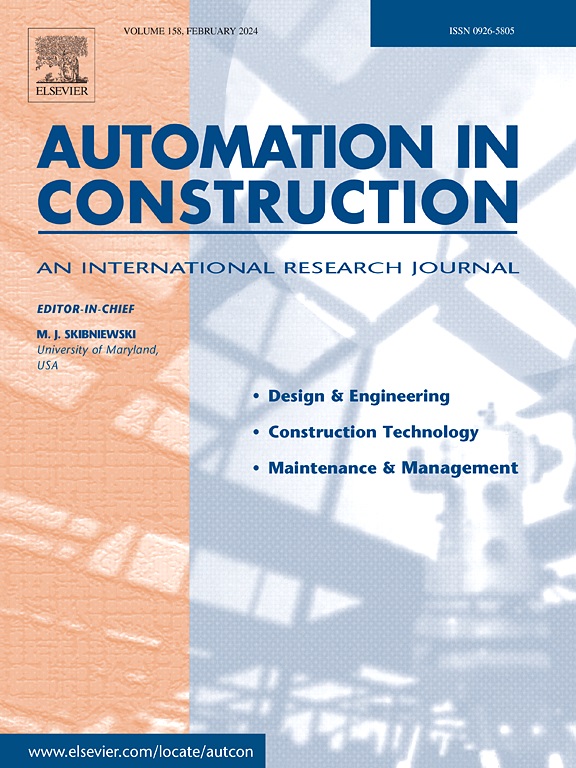Hybrid- segmentor:民用基础设施中自动细粒度裂缝分割的混合方法
IF 9.6
1区 工程技术
Q1 CONSTRUCTION & BUILDING TECHNOLOGY
引用次数: 0
摘要
检测和分割各种基础设施(如道路和建筑物)的裂缝至关重要,以确保安全、使用寿命和具有成本效益的维护。尽管深度学习取得了进步,但在不同条件下进行精确的裂纹检测仍然具有挑战性。本文介绍了Hybrid-Segmentor,这是一种深度学习模型,结合了基于卷积神经网络和基于transformer的架构,可以提取细粒度的局部特征和全局裂缝模式,大大增强了裂缝检测,从而改善了基础设施的维护。Hybrid-Segmentor在合并多个开源数据集创建的大型自定义数据集上进行训练,可以准确检测不同类型表面、裂缝形状和大小的裂缝。该模型通过准确检测不连续、模糊裂纹、裂纹区域内的非裂纹区域、模糊图像和复杂裂纹轮廓,证明了鲁棒性和通用性。此外,当与其他最近的裂缝分割模型相比,所提出的模型达到了最先进的性能,在五个关键指标上显著优于它们:准确性(0.971),精度(0.807),召回率(0.756),f1分数(0.774)和IoU(0.631)。本文章由计算机程序翻译,如有差异,请以英文原文为准。

Hybrid-Segmentor: Hybrid approach for automated fine-grained crack segmentation in civil infrastructure
It is essential to detect and segment cracks in various infrastructures, such as roads and buildings, to ensure safety, longevity, and cost-effective maintenance. Despite deep learning advancements, precise crack detection across diverse conditions remains challenging. This paper introduces Hybrid-Segmentor, a deep learning model combining Convolutional Neural Networks-based and Transformer-based architectures to extract both fine-grained local features and global crack patterns, significantly enhancing crack detection for improved infrastructure maintenance. Hybrid-Segmentor, trained on a large custom dataset created by merging multiple open-source datasets, can accurately detect cracks on different types of surfaces, crack shapes, and sizes. The model demonstrates robustness and versatility by accurately detecting discontinuities, vague cracks, non-crack regions within crack areas, blurred images, and complex crack contours. Furthermore, when compared against other recent models for crack segmentation, the proposed model achieves state-of-the-art performance, significantly outperforming them across five key metrics: accuracy (0.971), precision (0.807), recall (0.756), F1-score (0.774), and IoU (0.631).
求助全文
通过发布文献求助,成功后即可免费获取论文全文。
去求助
来源期刊

Automation in Construction
工程技术-工程:土木
CiteScore
19.20
自引率
16.50%
发文量
563
审稿时长
8.5 months
期刊介绍:
Automation in Construction is an international journal that focuses on publishing original research papers related to the use of Information Technologies in various aspects of the construction industry. The journal covers topics such as design, engineering, construction technologies, and the maintenance and management of constructed facilities.
The scope of Automation in Construction is extensive and covers all stages of the construction life cycle. This includes initial planning and design, construction of the facility, operation and maintenance, as well as the eventual dismantling and recycling of buildings and engineering structures.
 求助内容:
求助内容: 应助结果提醒方式:
应助结果提醒方式:


